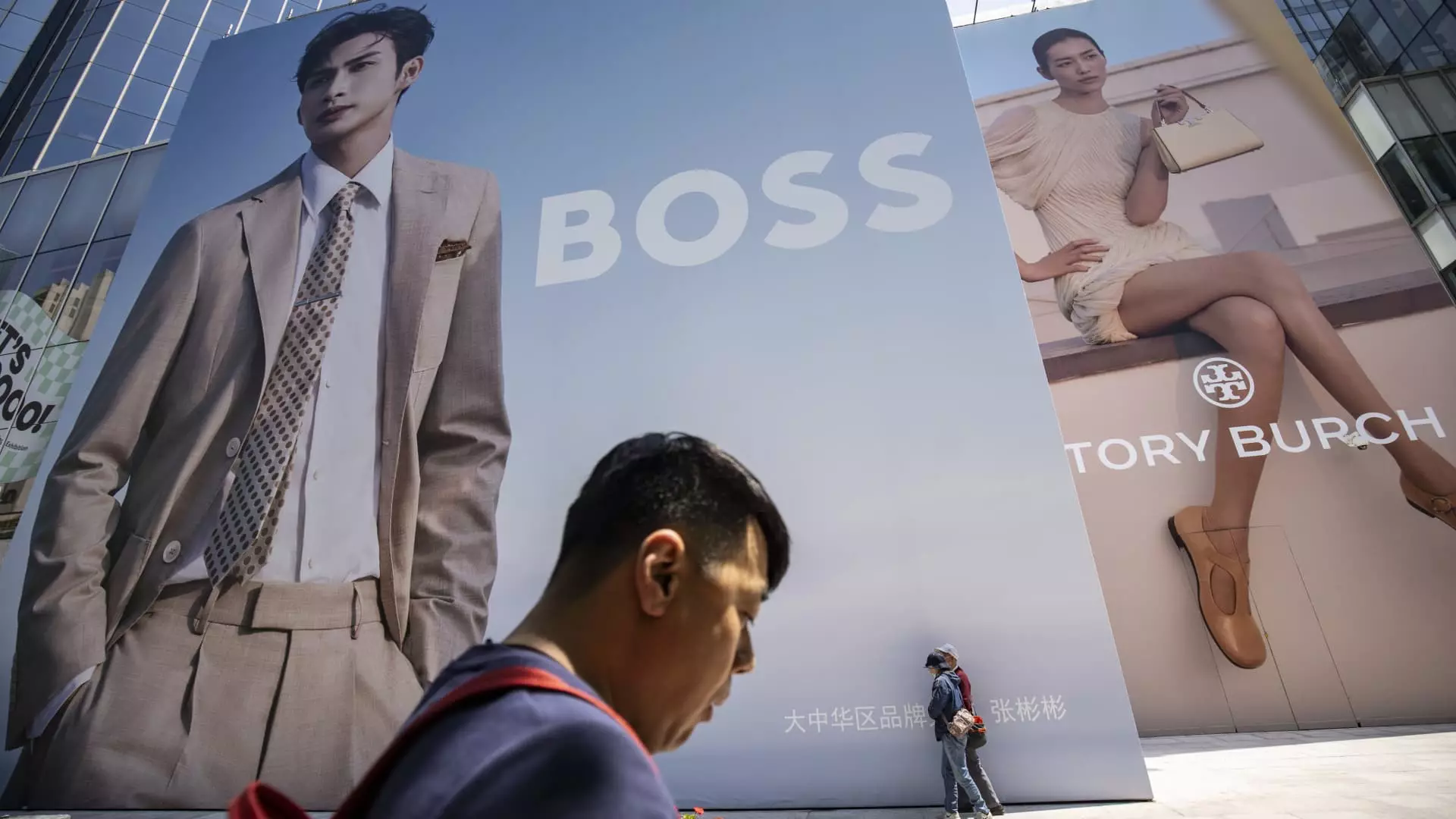The European luxury sector, once buoyant and seemingly immune to economic fluctuations, is currently facing a formidable decline, primarily triggered by falling demand from an essential consumer base: the Chinese market. The recent turmoil has sparked a reevaluation amongst analysts and investors alike, with consequences that could ripple through the industry for some time.
Recent data reflects a troubling snapshot of the luxury goods market in Europe. Analysts from Bank of America Securities have issued stark warnings, downgrading several luxury brands such as Hugo Boss from “buy” to “underperform.” This downgrade, along with others targeting iconic brands like Burberry and heavyweights LVMH and Kering, signals a shift in consumer behavior and market dynamics. Higher discounting and a downward trajectory in sales are expected as the luxury sector grapples with an atmosphere of diminished purchasing power among its consumers.
The assessment indicates a bleak forecast for the second half of the year. According to the financial experts, the post-COVID peak in luxury spending has evaporated, leaving in its wake a subdued environment where spending has grown lethargic. The searches for “affordable luxury” products are likely to surge as consumers become more cost-conscious, showing the opportunity for brands that can cater to tightened budgets without sacrificing quality.
The Chinese Consumer Dilemma
The Chinese luxury consumer, once a bedrock of the global luxury market, has seen a significant drop in both domestic demand and cross-border purchasing. Economic challenges arising from a shaky property market, coupled with geopolitical tensions, have contributed to this downturn. Luxury analysts emphasize that without the robust support of Chinese consumers, the entire luxury landscape appears increasingly precarious. Brands that thrived on the spending habits of this demographic are now facing the bitter reality of a “shopped-out” consumer base.
More alarmingly, emerging threats could exacerbate the situation. Susannah Streeter from Hargreaves Lansdown has raised concerns regarding the potential for renewed tariffs on luxury goods by China, prompted by recent tiffs over EU policies. The specter of tariffs looms large, potentially making sought-after luxury items less affordable for Chinese consumers, further damping demand and shaking the foundations of the luxury market.
While the Stoxx Europe Luxury 10 index managed to remain relatively stable, it is still showing a year-to-date decline of 3.82%. The performance of individual brands reflects a more pessimistic outlook. For instance, shares of Hugo Boss, which recently revised down its sales outlook due to broader economic pressures, suffered a nearly 4% drop. Burberry also found itself on the receiving end of stock price downgrades, highlighting the collective struggles faced by luxury brands.
This downward pressure is not an isolated phenomenon. Analysts believe that the long-standing hierarchical structure of luxury brands in Europe is being tested. Brands that have built their identities on exclusivity and aspirational pricing may need to rethink their strategies. For instance, Kering and Gucci have undergone significant restructuring efforts aimed at repositioning, but patience is running thin among investors.
Fashion-forward millennials and Gen Z shoppers represent a critical segment of luxury consumers, one whose purchasing habits are notoriously fickle. Their ability to influence market dynamics underscores a challenging reality for brands that have historically enjoyed higher margins and exclusivity. The attraction to luxury brands has evolved; younger consumers are gravitating toward experiences, sustainability, and ethical sourcing, pressuring luxury brands to adapt to new consumer values.
As these young aspirational buyers begin to prioritize value-driven purchases over high-end brands, firms may face an uphill battle in retaining this customer base. Brands like Burberry, which have attempted to modernize their offerings to appeal to this demographic, may end up struggling to resonate in a market that is continuously shifting beneath their feet.
The European luxury market finds itself at a crossroads as it grapples with a host of challenges from declining consumer demand, particularly in China, to external pressures like potential new tariffs. Analysts remain reserved in their expectations for improved conditions in the luxury sector, signaling a need for brands to innovate and adapt in order to thrive in an increasingly volatile market environment. The road ahead may be fraught with challenges, but it also presents opportunities for brands willing to pivot, rethink their narratives, and align with the evolving values of an increasingly discerning consumer base.


Leave a Reply